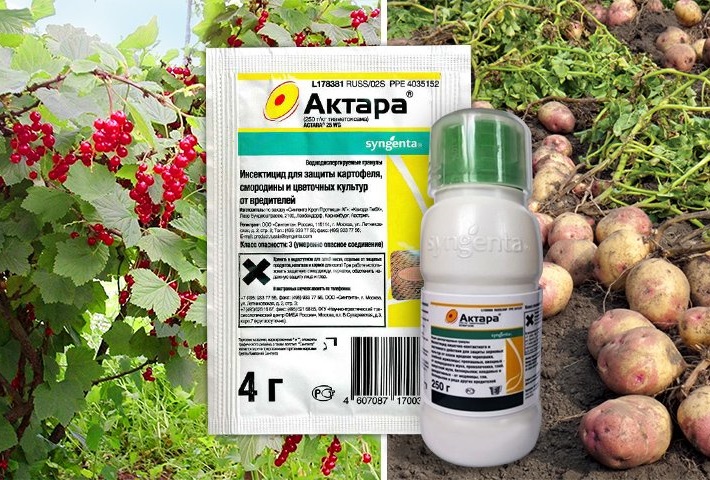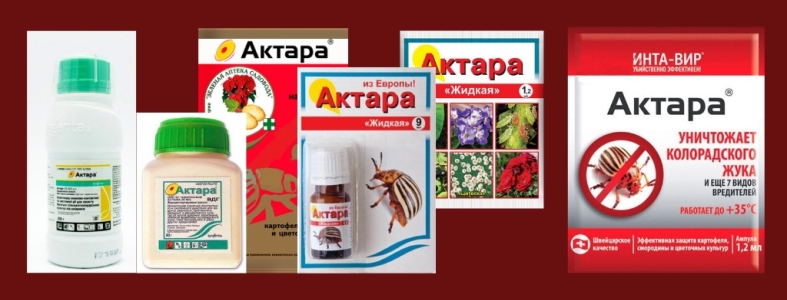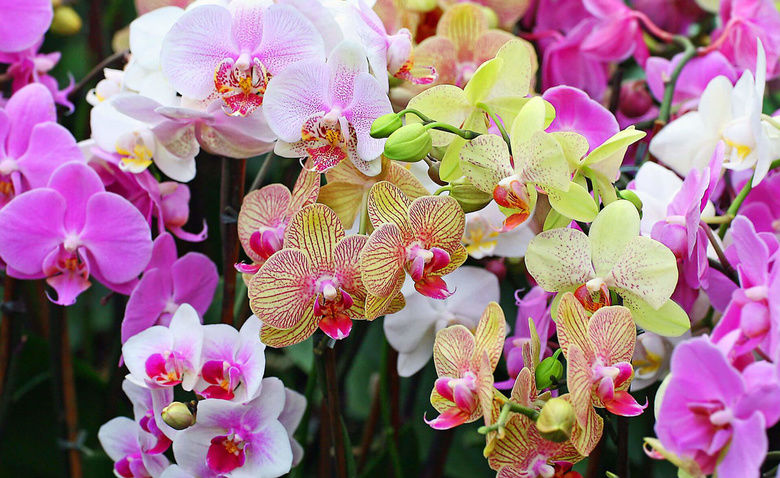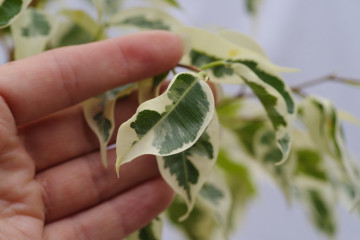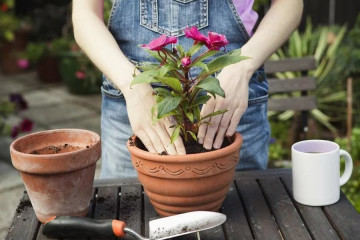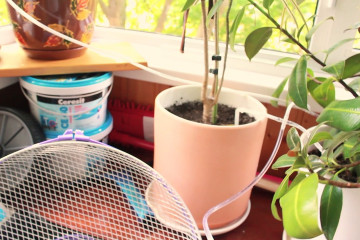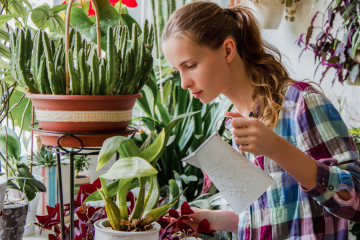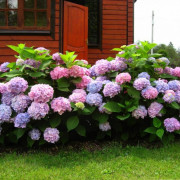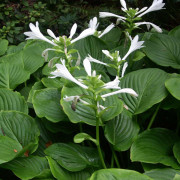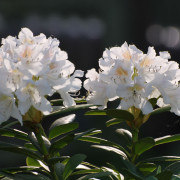Aktara for indoor plants: instructions and methods of divorce
Content:
Aktara is a chemical designed to kill insect pests. Its task is to protect plants from thrips, scale insects, mealybugs, Colorado potato beetle, aphids and other parasites. At the same time, it has a bad effect on whiteflies and absolutely does not help to fight ticks.
Below will be described the principle of action of the drug "Aktara", instructions for use for indoor plants, in what proportions it is necessary to dilute this powder and how to process the flower to protect it from pests.
Description of the tool
Aktara for indoor plants is a new generation insect repellent belonging to the class of neonicotinoids. These substances act on nicotinic receptors in the insect's nervous system. According to this principle, this class was named. The plant protects for 14-60 days.
The drug has no harmful effect on crops and flowers. Subject to the rules of use, it does not harm a person, since it does not penetrate the fruits. It is distributed to the leaves through the vascular system.
The timing of reaching the maximum concentration of a substance in a plant differs depending on the method of administration. If sprayed with a liquid solution, it completely spreads over the leaf within 20 hours. When watering, the insecticide enters the upper shoots within three days (maybe even earlier, it all depends on the conditions of the plant, its type and a number of other parameters).
The effectiveness of the drug does not depend on the amount of sun, rain or dry weather falling on the flowers. Its duration depends on the method of processing the orchids with Aktara. If the plant has been sprayed, it is protected for 2 to 4 weeks. When watering, the drug lasts longer - from 40 to 60 days.
With repeated use, resistance (resistance) of insects to the drug may form. So, very often repeated invasions of whiteflies and worms are observed. The reason for the relapses is that Aktara affects the larvae (which feed on the plant). If you wet the root ball incorrectly, then some of the larvae will remain in the ground. With each watering, the amount of insecticide decreases and the plant loses its protection.
In order to prevent the formation of resistance to Aktar for orchids or other plants, it is recommended to combine it with insecticides with a different principle of action. Aktara works well with most of the toxins for insect pests.
The maximum shelf life of Aktara is 4 years. The composition must not freeze. The minimum storage temperature is -10 degrees.
Breeding options for Aktara
A competent gardener needs to be able to breed Aktar. It is also available in liquid form, if you cannot find it, you will have to do everything yourself.
For spraying
To get rid of each type of pest, there are separate breeding rates for the drug (for 10 liters of water):
- Aphids, whitefly, Colorado potato beetle, scoops and whitefly - 2 grams.
- Moths, moth, cruciferous fleas - 3 grams.
- Thrips, onion fly, scale insects, false scales, miner moths - 4 grams.
For root application
In most cases, the dilution rate of Aktara for root application is 4 grams per 10 liters of water. An exception is if soil bugs are destroyed. Then the dosage is only 1 gram per 10 liters of water.
Orchid treatment with Aktara
Treatment must be carried out as soon as the first pest appears. The orchid is usually sprayed on.
Step-by-step instruction:
Choosing a place for a plant. Since this flower is indoor, it is necessary to find a well-ventilated room. A balcony is best suited for this role.
- Dilution of the composition. Carried out immediately before spraying. The ready-made solution is not stored. For an orchid, the proportions are as follows: for 5 liters of water - 4 g of substance. The resulting mixture can be used to process 124 flowers. Breeding is carried out in two stages. First, you need to dilute the substance in a small amount of water, then bring its amount to the desired one.
Watering orchids is also possible. In this case, it is necessary to stir 1 gram of the substance in 10 liters of water. If the number of pests is too large, then the plant must be sprayed and watered with Aktara.
Also, the chemical is used to treat the orchid when it is transplanted into another pot. In this case, you need to make a concentrated solution by diluting 4 g of powder in a liter of water. The decomposition time in this case will be 60 days. Before transplanting, it is necessary to soak the plants in the solution to protect them from pests.
It's okay if you overdo the dosage. Even exceeding it multiple times does not harm orchids. Therefore, those people who breed it are not afraid to gain more than the measured four grams. The sap of plants turns into poison for insects.
If the purpose of treatment is prevention, then it is enough to carry it out once a month. This is a requirement for rooms. If the treatment is carried out in the garden, then you can often spray the orchid with an insecticide.
Precautions for handling
When processing plants with Aktara, you need to be especially careful, because the substance has a third hazard class. It is recommended to wear gloves, goggles and a respirator. It is also advisable to wear special clothing, which, after use, must be hidden in a plastic bag and hermetically closed.
After using the solution, all tools must be thoroughly washed, the solution is drained under the root of the plant.
In addition, you need to wash your hands and face, and rinse your mouth with water. It is forbidden to dilute the solution in a container from which food will be taken in the future.
Poisoning with Aktara is expressed in nausea, vomiting, weakness. As soon as one of these symptoms manifests itself, it is necessary to stop processing the orchid and go for some fresh air and call an ambulance. If the product comes into contact with the skin, rinse it thoroughly for 15 minutes. If the poison enters the stomach, you need to drink activated charcoal and call an ambulance.
In no case should Aktar be stored in food containers, as well as drain the remains of the poison in places close to water bodies.
The insecticide is dangerous for bees, so it is best not to use it when it is most active.
Although Aktara is used to spray orchids in a room, it is best to do this outdoors. It is important to ensure that there is no sun and wind. Direct sunlight minimizes the effect of the drug.
Store the chemical out of the reach of children and animals. In general, Aktara is very good for orchids. How to use this insecticide, what precautions to follow when working with it and in what proportions to dilute it - the answers to all these questions have become clear. It is worth applying these recommendations, but if the summer resident feels unwell, immediately consult a doctor.

